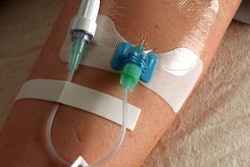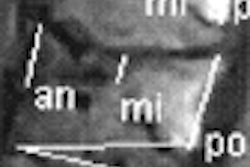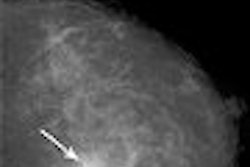The use of ablation techniques for primary liver cancer treatment has increased steadily over the first part of the 21st century, according to a presentation last week at the 2007 Gastrointestinal Cancers Symposium in Orlando, FL, sponsored by the American Society of Clinical Oncology (ASCO).
In 1999 about 3% of liver tumors were treated with ablation, said Dr. Roderich Schwarz, Ph.D. "At first, most ablation attempts were performed by interventional radiologists who were using cryoablation techniques. Since then, most of the procedures have been done with radiofrequency ablation (RFA). Since 1999, ablation has risen steadily, and by 2003 included about 8% of liver cancer patients," explained Schwarz, who is the director of the pancreatic cancer program and associate professor of surgery at the Cancer Institute of New Jersey in New Brunswick.
Schwarz's group looked at the impact of local therapy for hepatocellular carcinoma (HCC) on survival outcomes in a U.S. population. They looked at records from more than 5,000 people gleaned from the Surveillance, Epidemiology, and End Results database (SEER 1970-2003).
The analysis showed that the median patient age was 62, and the majority (68%) of the patients were male, with single lesions (52%) and a median tumor size of 5.2 cm. A multivariate overall survival (OS) analysis yielded several prognostic variables, including age, gender, tumor size, and local treatment modality.
In terms of the latter, the risk ratio (95% confidence interval) for all ablation was 1.13. At median one-year follow-up, the five-year OS was 19% for all ablation techniques. More specifically, the five-year OS for RFA was 26%, while the OS for cryoablation came in at 22%.
Schwarz noted that while the popularity of ablation has grown, it still cannot compete with liver transplant, which turned in a five-year survival rate of 67%. The survival difference between patients undergoing transplantation or the other procedures was statistically significant (p < 0.0001), he said.
"These data suggest that transplantation and resection should still be preferentially considered for all hepatocellular carcinoma patients," Schwarz said.
But overall, the SEER database revealed that the majority of HCC patients had no local control. Those patients had a 5% five-year survival rate, indicating that using some form of local treatment was better than doing nothing at all, he added.
In general, patients who are selected for transplant procedures are healthier than those who have ablative therapies, commented Dr. Charles Staley, professor of surgery and chief of surgical oncology at Emory University in Atlanta.
Schwarz agreed ablation is used as a palliative treatment in patients who have metastatic disease or poor performance status, he said. "Many of the patients who we select for ablation therapy are not healthy enough to undergo general anesthesia," Staley added.
By Ric Susman
AuntMinnie.com contributing writer
January 30, 2007
Related Reading
Cryoablation reduces metastatic cancer pain, November 27, 2006
Copyright © 2007 AuntMinnie.com



















